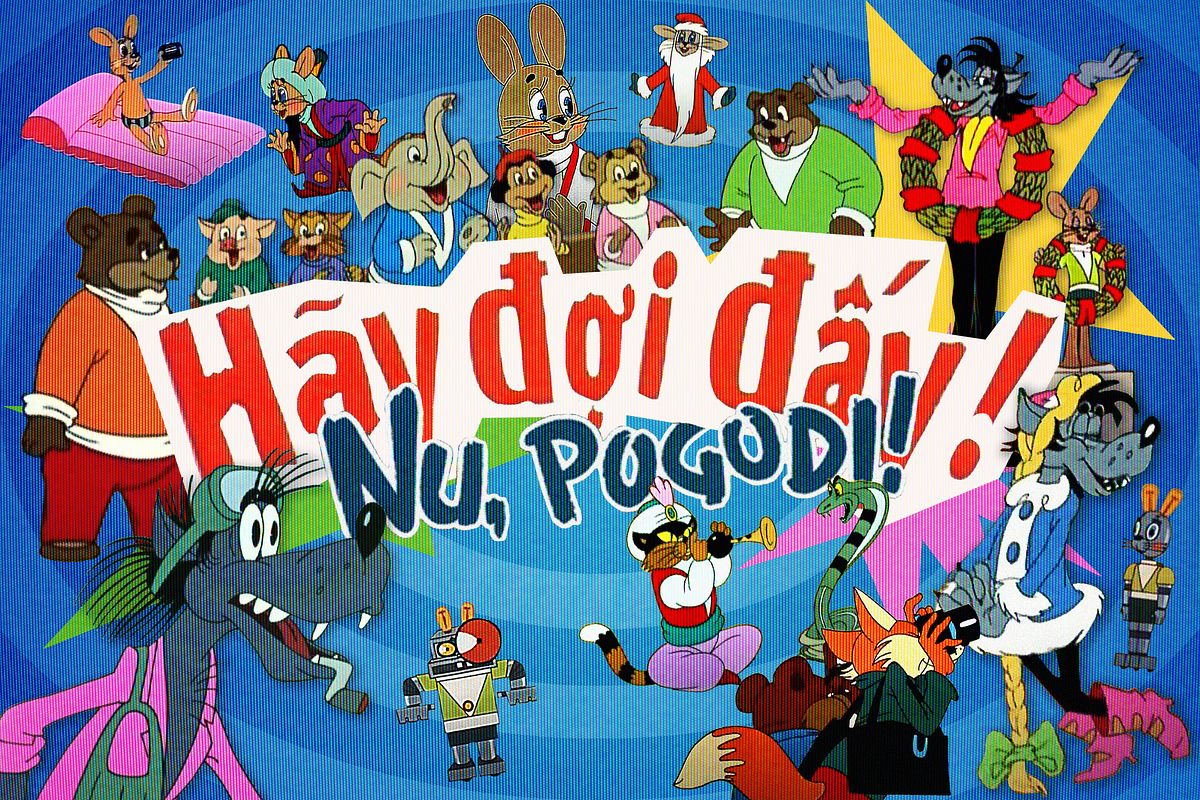It was an ordinary Saturday summer afternoon in the late 2000s, and I was sitting in my mom’s office while waiting for her to finish her work, watching YouTube on one of the computers in the room. It wasn't just any video for kids, but a scene where a wolf downs a whole pack of cigarettes at once and blows the smoke into a locked telephone booth to try to suffocate a hare inside. That seemingly absurd scenario came from none other than Hãy Đợi Đấy!, one of my favorite cartoon shows.
Ну, погоди!, known in Vietnam as Hãy Đợi Đấy!, was a staple in many Vietnamese childhoods alongside other iconic children's media such as Tom and Jerry or Phineas and Ferb. It was one of the first series I watched once I became aware of cartoons’ existence, and unlike other Disney or Cartoon Network series, I could thoroughly enjoy it without having to understand the language, even though it was a Russian cartoon.
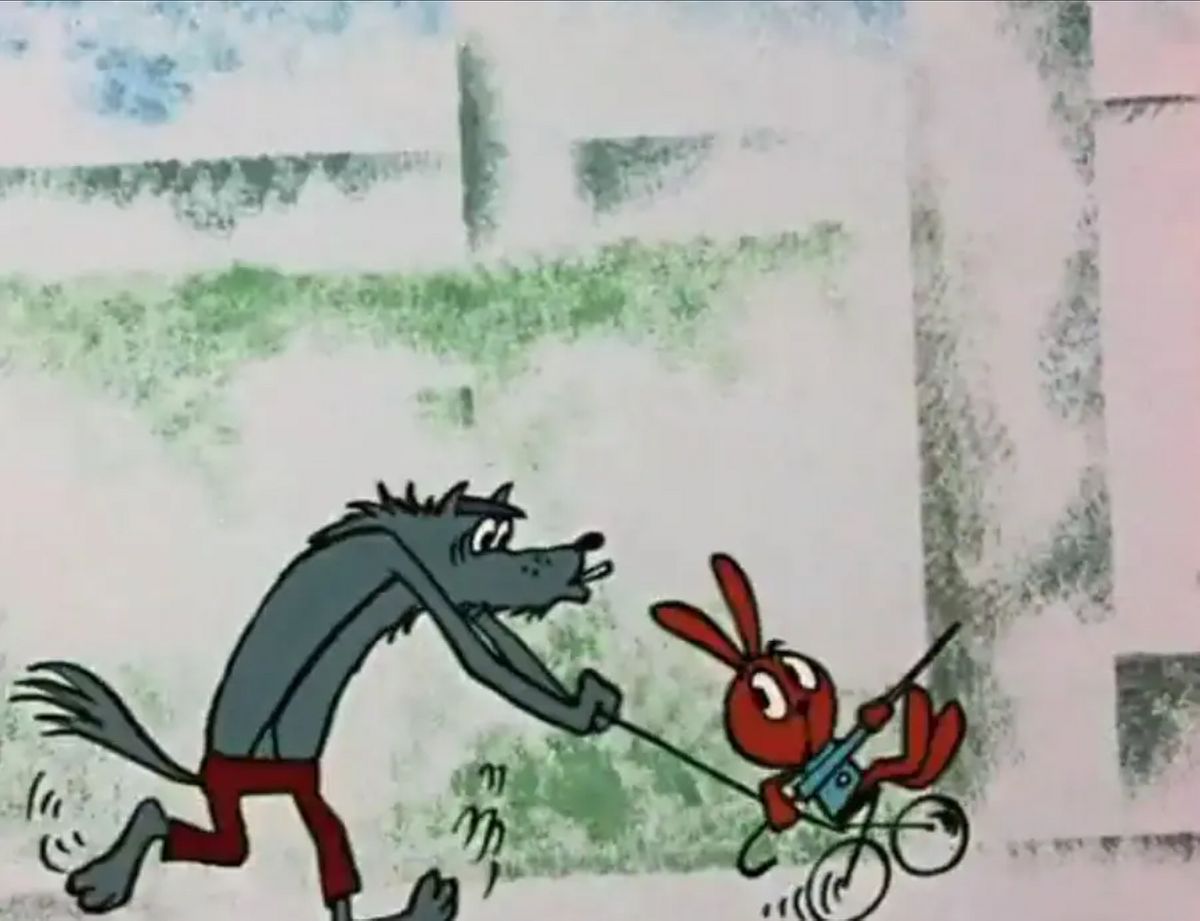
The earliest concept of the two main characters in Happy Merry-Go-Round.
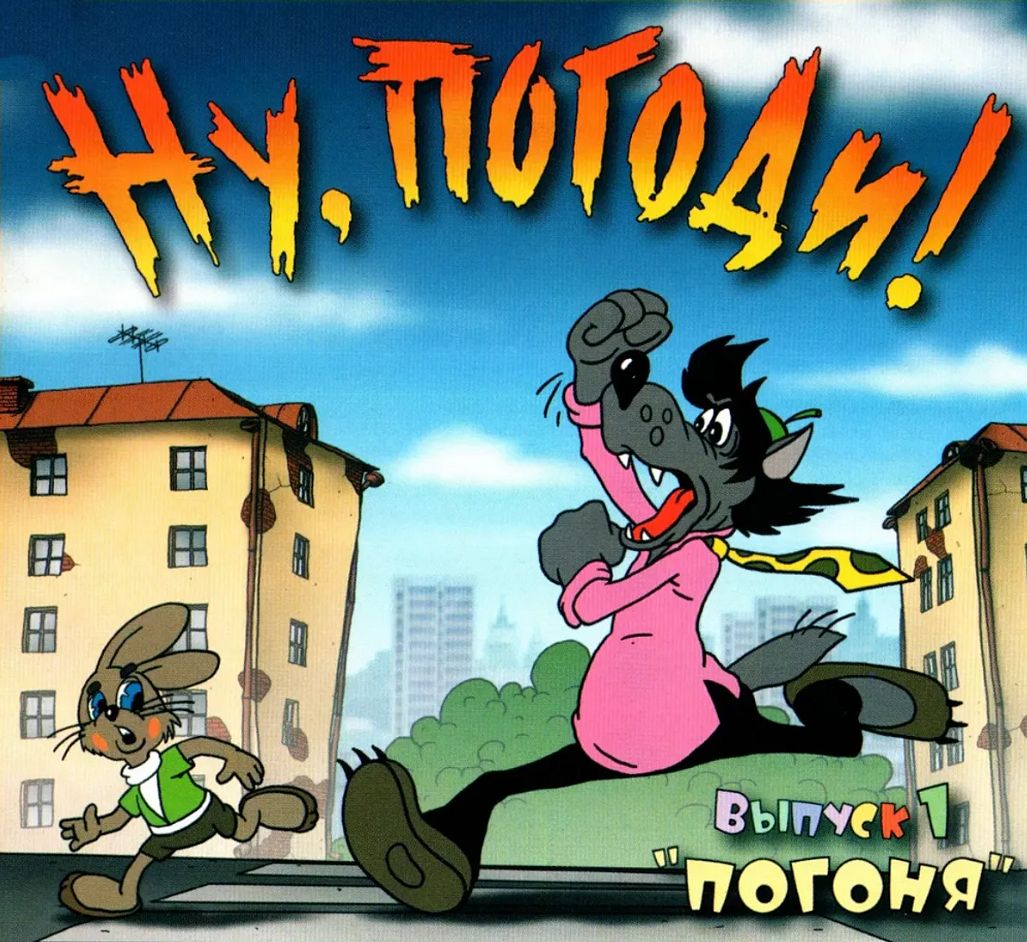
The official series title card.
Hãy Đợi Đấy! was created for Soyuzmultfilm, a well-known animation studio in Moscow, by three prominent Soviet writers, Aleksandr Kurlyandsky, Felix Kandel, and Arkady Khait. It premiered in 1969 as a two-minute pilot featured in another animated anthology series named Happy Merry-Go-Round. It became a stand-alone cartoon show thanks to the public’s positive reception, with 16 episodes aired between the 1960s and the 1980s. Contrary to the Soviet-produced animated features at that time, which either contained adult-oriented themes or heavily educational messages for children, this series followed a slapstick comedy formula and a simple, repetitive storyline, starting with a Wolf chasing a Hare, the Hare managing to outsmart the Wolf, and the Wolf yelling in agony, “Ну, кролик, погоди!” (Hey, rabbit, just you wait!) at the end of every episode.
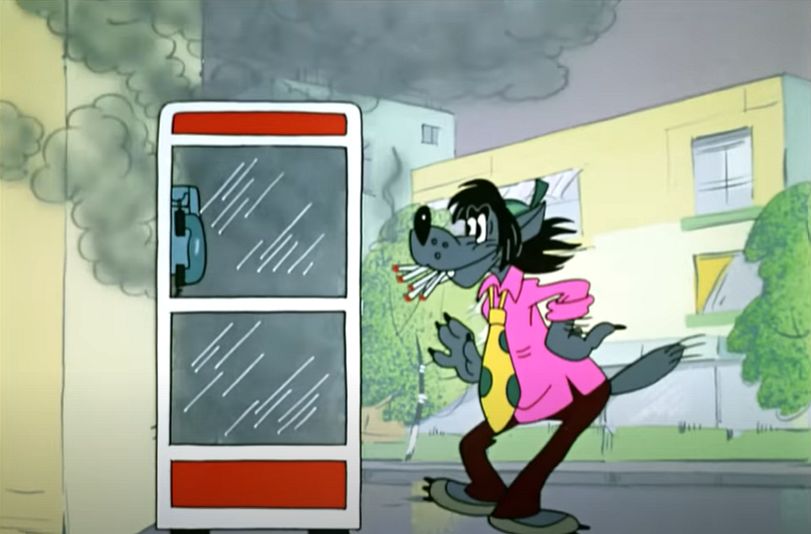
The Wolf's smoking habit has raised concerns amongst parents.
The cartoon sparked some controversies surrounding how the Wolf was depicted as smoking a lot for a children's show, and some were concerned that the violence might be harmful to children. Nonetheless, Hãy Đợi Đấy! still reached immense levels of popularity, both domestically and internationally, becoming a cultural symbol in the Soviet Union and Russia.
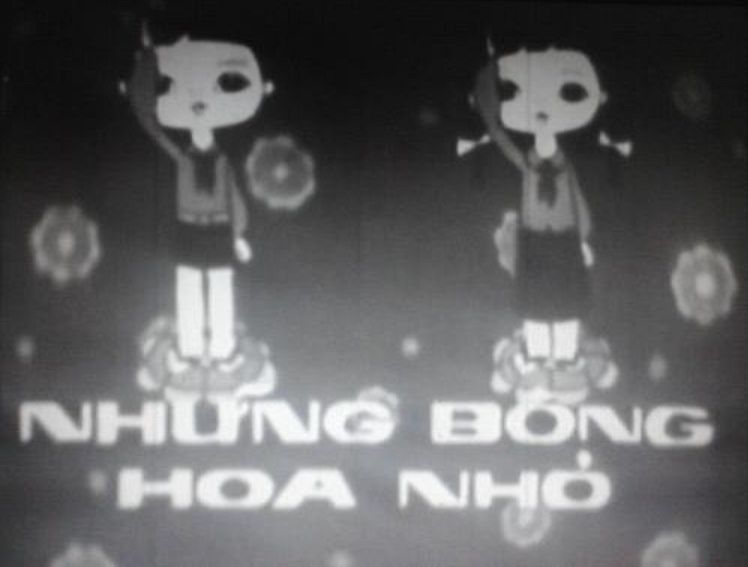
Những Bông Hoa Nhỏ on VTV was the first place where Hãy Đợi Đấy! appeared.
Hãy Đợi Đấy! came to Vietnam for the first time through the show Những Bông Hoa Nhỏ, an anthology program for children on national television that featured cartoons from different countries. Due to the lack of television content made for Vietnamese children during the 1970s and 1980s, the cartoon instantly became a sensation. Indeed, the scene of children in the neighborhood huddling together in front of a black-and-white TV, waiting for Hãy Đợi Đấy!’s familiar opening title card and song was a core memory for many. Many moments from the show were also deeply ingrained; notably the Wolf’s hilarious sprite with the memorable pink flower-printed boxer, the Hare’s laugh whenever it successfully evades the Wolf’s attack, or the Wolf screaming, “Nu, Pogodi!” at the end.
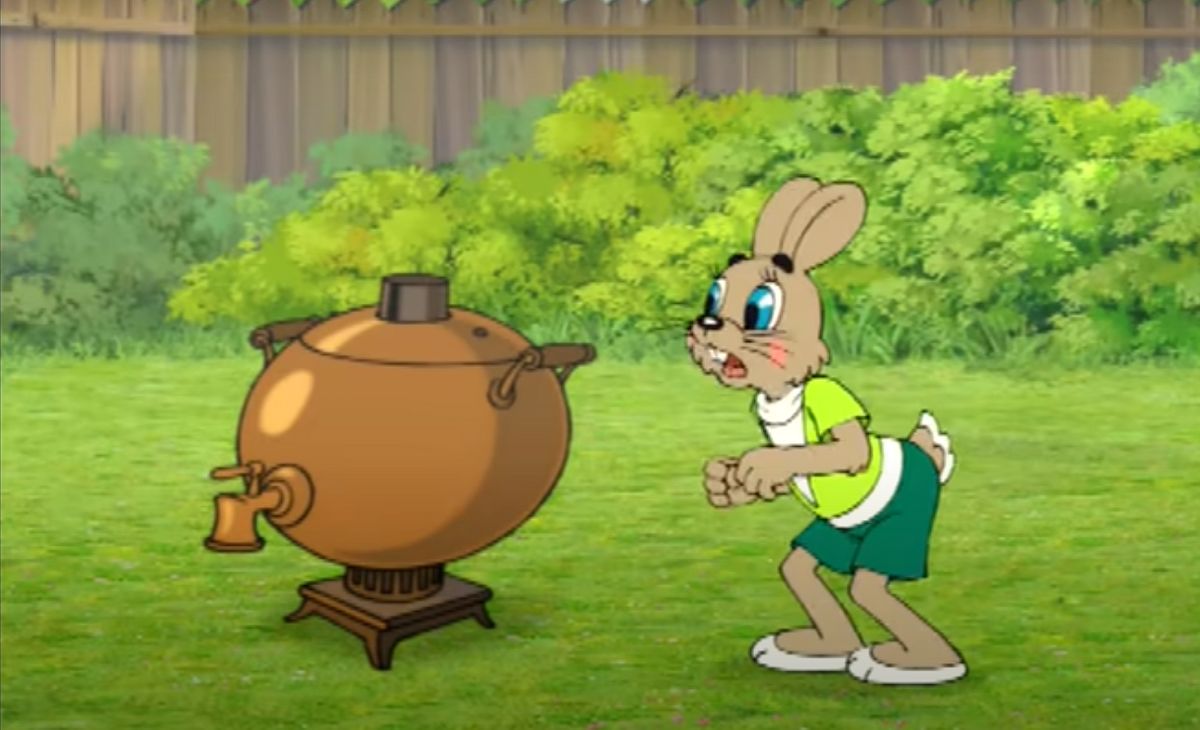
The samovar, a Russian tea-making utensil.
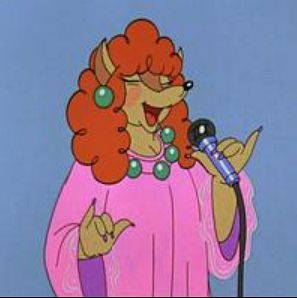
The fox's depiction is inspired by famous Russian singer Alla Pugachyova.
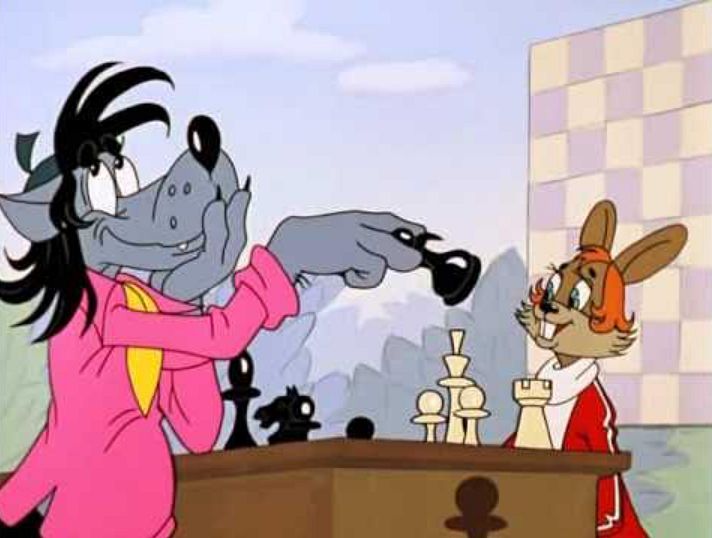
A scene from the special episode celebrating the Summer Olympics in Moscow.
While watching Hãy Đợi Đấy!, the audience may notice many Soviet/Russian cultural references sprinkled throughout the series. Some of those references include the samovar, a utensil frequently used in the Soviet Union/Russia to make tea; the Fox singer from episode 15 being a caricature of Alla Pugachyova, a famous Russian singer; episode 16 paying homage to the well-known European fairy tales among Slavic communities; an entire episode celebrating the 1980 Summer Olympics in Moscow; traditional clothes or dances; and many, many more.
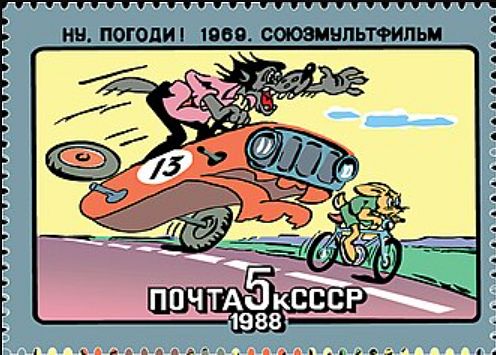
The series on a stamp.
After the normalization of diplomatic relations between Vietnam and other countries like China and the US in the early and mid-1990s, many new goods were imported into Vietnam, including a lot more children's media from other cultures. From Disney movies to Chinese-speaking cartoon series with Vietnamese dubbing, Hãy Đợi Đấy! slowly lost its relevance in the Vietnamese market as its simplistic and crude style of animation could no longer compete against the glamorous animated features from big studios. Additionally, the death of Anatoli Papanov, the Wolf’s voice actor, was a blow to the show, and the two episodes created in 1993 using Papanov’s voice archives were a critical failure, resulting in Hãy Đợi Đấy! fading out of the spotlight. Nevertheless, for Vietnamese who followed the cartoon first when it was aired on Những Bông Hoa Nhỏ, Hãy Đợi Đấy! was a key childhood landmark. Its cultural influence in Vietnam is shown by the way “Nu, Pogodi!” became a household catchphrase for many Vietnamese people from Gen X, even though they do not know the language.
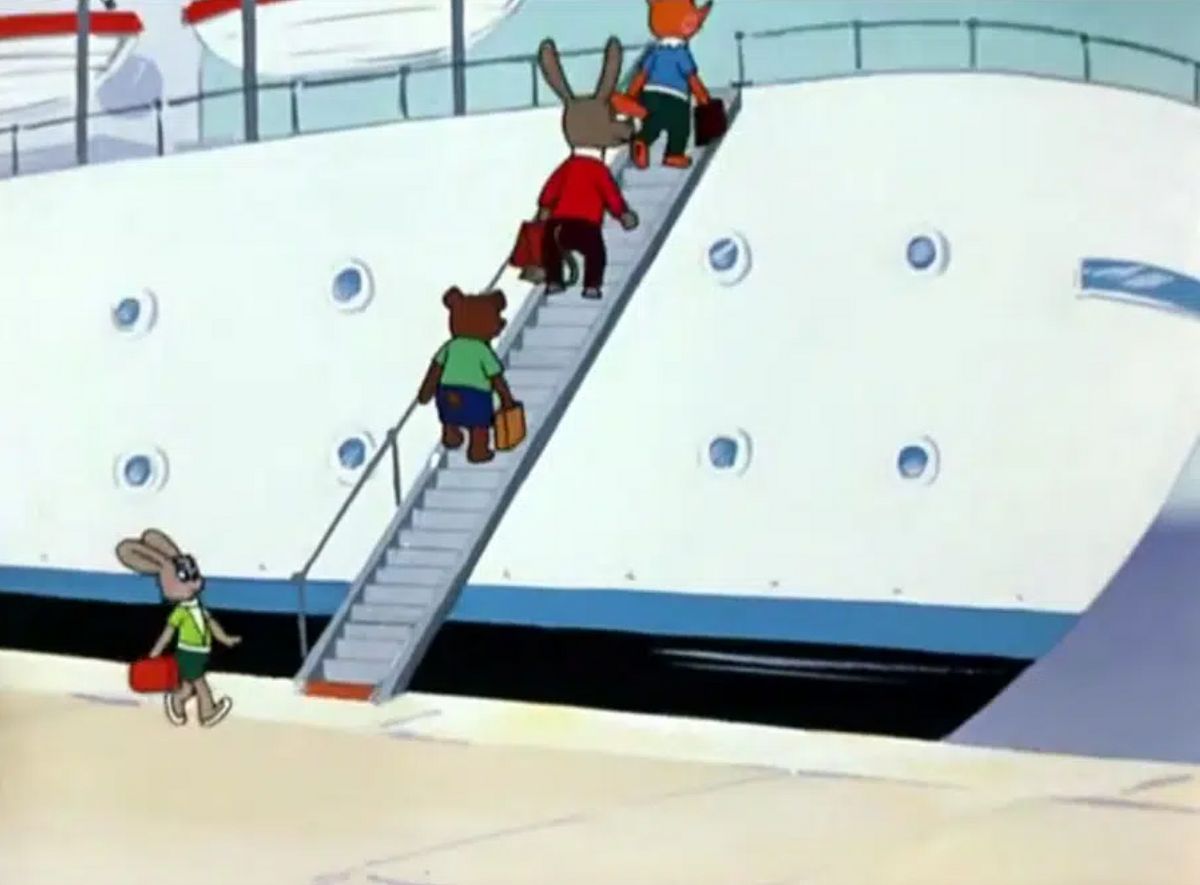
Boarding a boat.
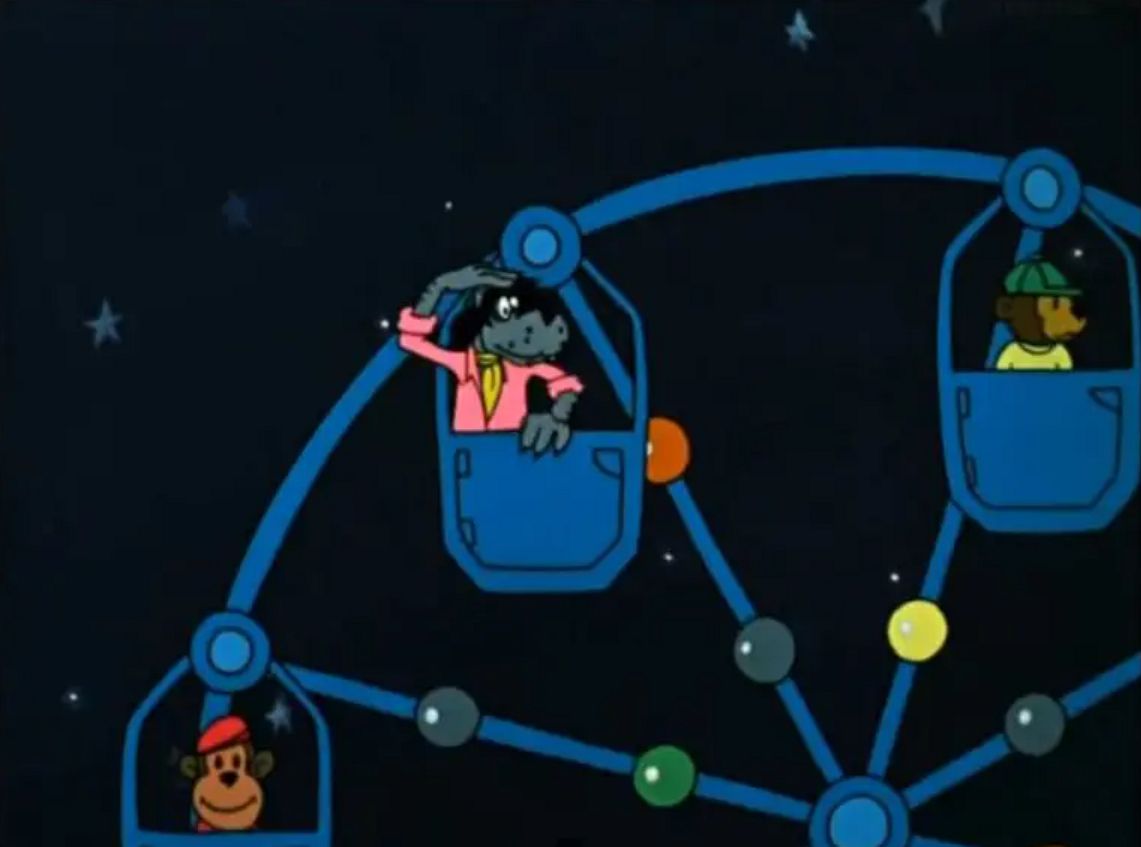
On the Ferris Wheel.
Today, when I look at Hãy Đợi Đấy!, I do not see just the Wolf and the Hare’s endless chase and banter, but a bridge across time and cultural background. For people in my mom’s generation, there was the rare, childlike joy of watching something child-friendly in black and white. For me, there was a world of wonder that I immersed myself in every Saturday afternoon. It became more than mere entertainment, but a reminder of how stories and culture can transcend physical boundaries. I wonder if the writers and director of Hãy Đợi Đấy! knew the profound impact their creation had on members of an international audience, like me.

